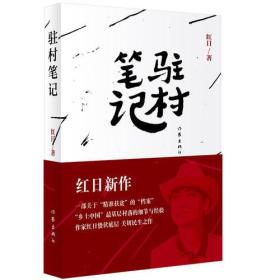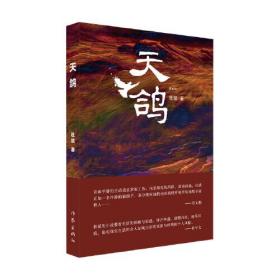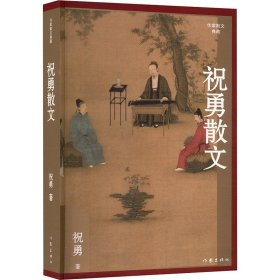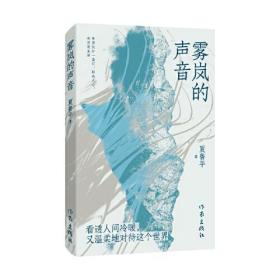
正版现货新书 红外热成像技术及其岩土实验应用 9787030447777 宫伟力,王炯,刘冬桥
全新正版现货,以书名为准,放心购买,购书咨询18931383650朱老师
¥ 102.4 8.0折 ¥ 128 全新
库存7件
作者宫伟力,王炯,刘冬桥
出版社科学出版社有限责任公司
ISBN9787030447777
出版时间2017-12
装帧平装
开本其他
定价128元
货号23832336
上书时间2024-10-14
- 在售商品 暂无
- 平均发货时间 10小时
- 好评率 暂无
- 最新上架
商品详情
- 品相描述:全新
- 商品描述
-
导语摘要
Thebookstarts,inChapter1,withanoverviewofthecurrentstatusofgeomechanicalmodeltestsandinfrareddetection,followedbyanintroductiontosometheoreticalaspectsofinfraredphysicsandalgorithmsusedintheinfraredimageprocessing(Chapter2).GeomechanicalmodelconstructionispresentedinChapter3.InChapters4,5,6,7and8,applicationofinfraredthermographyinthegeomechanicalmodeltestsontunnelexcavationsandroadwaystabilityassessmentsindifferentlyinclinedrockstrataarepresentedrespectivelywithadetailedde*ionoftheexperimentalmethods,testingprocedures,imagingprocessingalgorithmsandfindingsobtainedfromcharacterizationofthethermalsequences.
目录
Preface
Chapter 1 Overview
1.1 Background
1.2 Overview of geomechanics model tests
1.3 Overview of infrared detection
References
Chapter 2 Theoretical aspects of the infrared
2.1 The infrared
2.2 Infrared spectral band
2.3 Radiometry fundamentals
2.3.1 Radiant energy
2.3.2 Radiant power and flux
2.3.3 Geometrical spreading of a beam
2.3.4 Radiance
2.3.5 Irradiance
2.3.6 Radiant exitance
2.3.7 Radiant intensity of a source in a given direction ~
2.3.8 Bouguer's law
2.3.9 Radiation scattering
2.4 Black body radiation
2.4.1 Concept of black body
2.4.2 Planck's law
2.4.3 Wien's law
2.4.4 Stefan-Boltzmann law
2.4.5 Exitance of a black body in a given spectral band ~
2.4.6 Calculation of exitance of black body
2.4.7 Thermal radiation contrast
2.5 Radiation of real bodies
2.5.1 Different types of radiator
2.5.2 Emissivity of a material
2.5.3 Stefan-Boltzmann's law for grey body
2.5.4 Dielectric materials
2.5.5 Electrically conducting materials
References
Chapter 3 Geomechanical model test
3.1 Literature review on physical model test
3.2 Similarity theory and dimensional analysis
3.2.1 Similarity principles
3.2.2 Selection of similarity materials and ratios
3.3 Field case (prototype)
3.3.1 Site geology
3.3.2 In situ rock properties
3.4 Geomechanical model construction
3.4.1 Testing machine
3.4.2 Model dimension
3.4.3 Physico-mechanical parameters of the model
3.4.4 Rock structure simulation
3.4.5 Geomechanical model
3.5 Infrared detection
3.5.1 Thermography and imaging procedures
3.5.2 Temperature calibration
3.5.3 Image processing
References
Chapter 4 Excavation in 60~ inclined strata
4.1 Introduction
4.2 Experiment
4.2.1 Rock model material
4.2.2 Geomechanical model construction
4.2.3 Excavation plan
4.2.4 Excavation method
4.3 Infrared detection
4.3.1 Infrared thermography
4.3.2 Thermal-mechanical coupling
4.4 Image processing
4.4.1 Problem statement
4.4.2 Algorithms
4.4.3 Processing and assessment
4.5 Image analysis
4.5.1 Extracting the energy release index
4.5.2 Spectral characterization
4.5.3 Principles for image analysis
4.6 Experimental results
4.6.1 Overall thermal response
4.6.2 Heat sources and thermal conduction
4.6.3 Characterization of the full-face excavation
4.6.4 Heat production mechanism in the staged excavation
4.6.5 Characterization of the staged excavation
4.7 Discussion
4.7.1 Excavation in differently inclined rocks over full-face excavation
4.7.2 Excavation in differently inclined rocks over the staged excavation
4.7.3 Summary
References
Chapter 5 Excavation in 45° strata
5.1 Introduction
5.2 Short review of infrared detection
5.3 Experiment
5.3.1 Model eonstruction
5.3.2 Testing procedure
5.4 Infrared detection
5.4.1 Infrared thermography
5.4.2 Energy release index
5.4.3 Image processing algorithm
5.4.4 Principles for image analysis
5.4.5 Fourier analysis
5.5 Results and Discussions
5.5.1 Overall thermal response
5.5.2 Characterization of the full-face excavation
5.5.3 Comparison between the excavation in 0° and 45° inclined strata
5.5.4 Characterization of the staged excavation
5.5.5 Summary
References
Chapter 6 Excavation in horizontal strata
6.1 Introduction
6.2 Experiment
6.2.1 Geomechanical model construction
6.2.2 Testing procedure
6.3 Infrared detection
6.3.1 Infrared thermography
6.3.2 Image processing
6.3.3 Fourier transform of the thermal image
6.3.4 Enhancement of the thermal image
6.3.5 Spectral analysis
6.4 Results and discussions
6.4.1 Overall thermal response
6.4.2 Characterization of the full-face excavation
6.4.3 Characterization of the staged excavation
6.4.4 Summary
References
Chapter 7 Overloaded tunnel in 45° inclined rocks
7.1 Introduction
7.2 Experimental
7.2.1 Geomechanical model
7.2.2 Loading path
7.3 Infrared detection
7.3.1 Infrared thermography and imaging procedures
7.3.2 Temperature calibration
7.3.3 Image processing
7.4 Fourier analysis
7.4.1 Stress wave propagation
7.4.2 Fourier transform
7.4.3 Periodicity in time domain
7.4.4 Periodicity in spatial domain
7.4.5 Physical meaning of the spatial frequency
7.4.6 Method for spectral analysis
7.5 Loading path and overall rock response
7.5.1 Energy release index
7.5.2 Loading rate
7.5.3 Characterization of the loading rate effect
7.6 Results and discussions
7.6.1 Terms and approach
7.6.2 Spectra characterization of loading state A
7.6.3 Characterization of loading cases with slow loading rate
7.6.4 Characterization of loading cases with fast loading rate
7.6.5 Discussions
7.6.6 Summary
References
Chapter 8 Overloaded tunnel in horizontal strata
8.1 Introduction
8.2 Experimental
8.2.1 Geological model
8.2.2 Loading scheme
8.2.3 Infrared detection
8.3 Problem statement
8.4 Image denoising filters
8.4.1 Types of the noise
8.4.2 Removing environmental noise
8.4.3 Suppression of the impulsive noise
8.4.4 Removing the additive-periodical noise
8.5 Morphological enhancement filter
8.5.1 Short review
8.5.2 Fundamentals
8.5.3 Filter development
8.5.4 Multi-scale SE
8.6 Image processing
8.6.1 Algorithm and image analysis rules
8.6.2 Assessment of imaging processing effect
8.6.3 Rock response at hydrostatic stress state
8.6.4 Rock response at unbalanced stress state
8.7 Characterization of new IR images
8.7.1 Mission and rule
8.7.2 Loading case B1
8.7.3 Loading case B2
8.7.4 Loading case B3
8.7.5 Loading case 134
8.7.6 Loading case B5
8.7.7 Loading case B6
8.7.8 Discussion
8.7.9 Summary
References
Appendix: The colered thermal images inChapter 4-8
内容摘要
Thebookstarts,inChapter1,withanoverviewofthecurrentstatusofgeomechanicalmodeltestsandinfrareddetection,followedbyanintroductiontosometheoreticalaspectsofinfraredphysicsandalgorithmsusedintheinfraredimageprocessing(Chapter2).GeomechanicalmodelconstructionispresentedinChapter3.InChapters4,5,6,7and8,applicationofinfraredthermographyinthegeomechanicalmodeltestsontunnelexcavationsandroadwaystabilityassessmentsindifferentlyinclinedrockstrataarepresentedrespectivelywithadetailedde*ionoftheexperimentalmethods,testingprocedures,imagingprocessingalgorithmsandfindingsobtainedfromcharacterizationofthethermalsequences.
相关推荐
-

红外热成像测温原理与技术 正版新书塑封
全新武汉
¥ 40.00
-

正版现货新书 红外热像测温技术及应用 9787560667409 李云红
全新北京
¥ 25.52
-

正版现货新书 红外热成像理论与应用 9787502486976 彭岩岩,宫伟力
全新北京
¥ 51.48
-

正版现货新书 脊柱关节肌骨病红外热成像彩色图谱 9787543336513 王平主编
全新北京
¥ 81.35
-

【正版】红外热像测温技术及应用
全新嘉兴
¥ 19.77
-

正版现货新书 红外热像检测(电网设备状态检测技术培训教材) 9787512375703 国网技术学院
全新北京
¥ 10.82
-

现货速发 红外热成像 国防工业出版社 9787118125269
全新泰安
¥ 122.80
-
![正版现货新书 红外热成像测量中的误差与不确定度 9787118122312 [波兰]Waldemar Minkina,[波兰]Sebastian Dudzik](https://www0.kfzimg.com/sw/kfz-cos/kfzimg/ddcccfed/97703e362b941d39_s.jpg)
正版现货新书 红外热成像测量中的误差与不确定度 9787118122312 [波兰]Waldemar Minkina,[波兰]Sebastian Dudzik
全新北京
¥ 57.77
-

正版现货新书 红外集 9787516116210 贺信民著
全新北京
¥ 11.14
-

书籍正版变电站设备红外热像检测实例分析
全新北京
¥ 51.66
— 没有更多了 —












以下为对购买帮助不大的评价